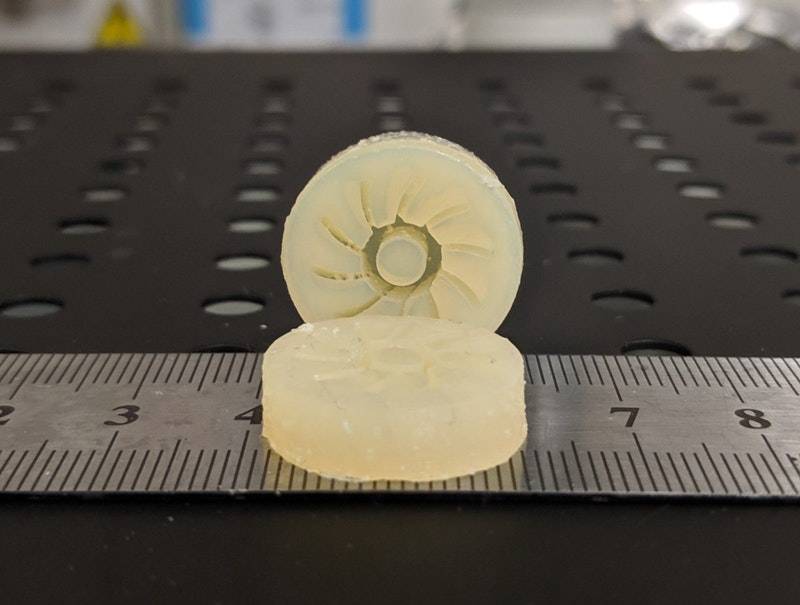A recent research paper published in ACS Applied Materials & Interfaces, by researchers from Virginia Tech have detailed their initial findings in developing to 3D Print challenging materials, including chemically modifying liquid latexes to make them printable and building a custom 3D printer.
Vat photopolymerization (VP) additive manufacturing fabricates intricate geometries with excellent resolution; however, high molecular weight polymers cannot be used in this process due to high melt viscosities. For example, printing a styrene-butadiene rubber latex, a previously inaccessible elastomer composition for vat polymerisation, was printed and yielded printed elastomers with precise geometry and tensile extensibilities exceeding 500%.
This paper describes a new technology utilising photopolymers and a VP system designed to use polymeric colloids like latex rubber by decoupling the dependency of viscosity on molecular weight. Photocrosslinking of a continuous-phase scaffold, which surrounds the latex particles, combined with in situ computer-vision print parameter optimization, which compensates for light scattering, enables high-resolution VP of high molecular weight polymer latexes as particle-embedded green bodies. Thermal post-processing promotes coalescence of the dispersed particles throughout the scaffold, forming a semi-interpenetrating polymer network without loss in part resolution.
The joint industry-academic discovery was made as a result of the National Science Foundation award aligned with the Grant Opportunities for Academic Liaison with Industry program. While attempts to 3D print with latex rubber have already been made and documented in scientific literature, this latest research from the Macromolecules Innovation Institute (MII), the College of Science, and the College of Engineering is said to come closer to replicating the mechanical properties of the material in additive manufacturing than ever before
To do this, a custom 3D printer was built based on a patent filed in 2017 by two members of the team involving scanning UV light across a large area. The printer recoats a thin layer of latex resin and a projector then cures a specific area of the build area with UV light. The first version led to some fluid latex particle scattering outside of the projected UV light on the latex resin surface, resulting in inaccurate parts. However, for the second version, they embedded a camera to examine how the light reacts with the material and adjust print parameters accordingly to ensure curing of just the intended shape.
The final 3D printed latex parts exhibited strong mechanical properties in a matrix known as a semi-interpenetrating polymer network, which was the first time this had been documented for elastomeric latexes. The hope is that this initial research will open up the ability the print with a variety of elastic materials for applications such as soft robotics and medical devices.
The full paper, authored by Philip J. Scott, Viswanath Meenakshisundaram, Maruti Hegde, Christopher R. Kasprzak, Christopher R. Winkler, Keyton D. Feller, Christopher B. Williams, and Timothy E. Long, can be accessed here.


